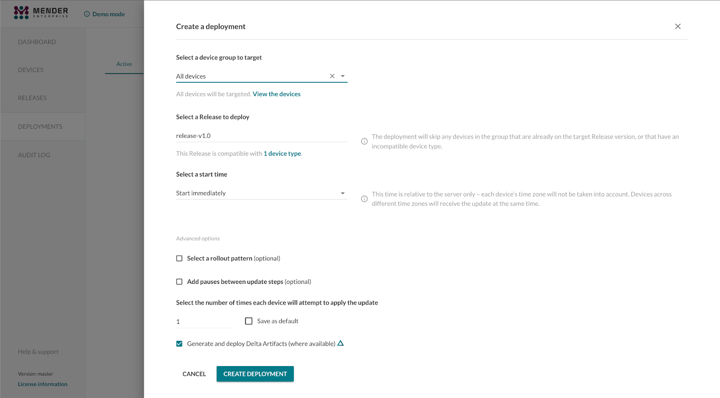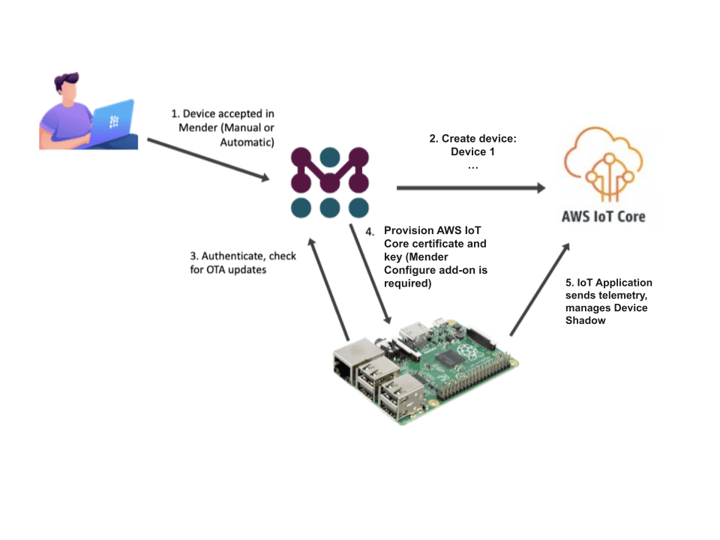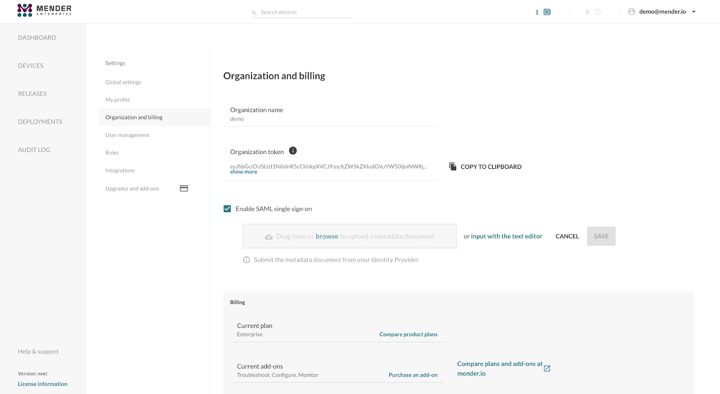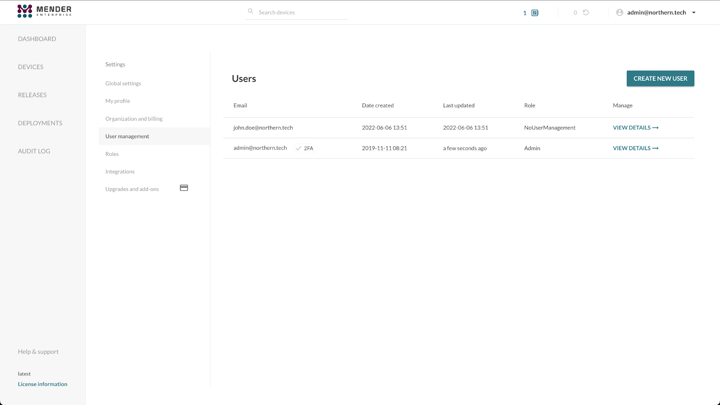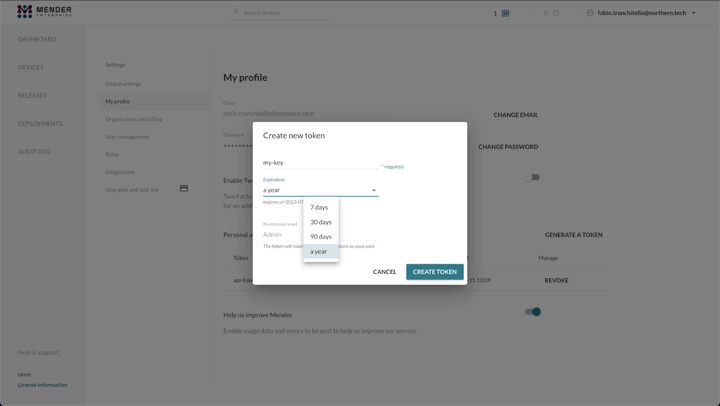Articles by Fabio Tranchitella
Mender 3.6: Auto-generation of delta updates
Mender 3.6 is released, including all the features published on Hosted Mender in the last few months as part of our continuous development and rolling rele
|
7 min read
Mender 3.4 on-prem release: integrate Mender with AWS IoT Core and other backend services
Today Mender 3.4 is released, including all the features we published on Hosted Mender in the last few months as part of our continuous development and rol
|
4 min read
Secure boot support for Debian-derived distributions
Secure Boot is a service offered by the UEFI boot firmware which verifies that all executable code loaded during the boot process is signed by a trusted ke
|
2 min read
Mender 3.4 release: Provision devices to AWS IoT Core
Mender 3.4 now supports native integrations with AWS IoT Core. Most notably, it can provision devices to your AWS IoT Core instance, so your device applica
|
4 min read
SAML Federated Authentication is now available in Mender Enterprise
It is now possible to configure your tenant on Hosted Mender to leverage a SAML-compatible Identity Provider (IdP) to identify and authenticate users. Than
|
1 min read
Updates of the terms of service for Hosted Mender
On October 10, 2022, we’re updating our terms of service for Hosted Mender. You can review the updated terms here. This update covers the inclusion of a se
|
0 min read
Two Factor Authentication is now available in all the Hosted Mender plans
Two Factor Authentication (2FA) is an extra layer of protection for user authentication with OTP-compatible applications like Authly and Google Authenticat
|
0 min read
Personal Access Tokens simplify the API-based integration with Hosted Mender
It is now possible to generate and use Personal Access Tokens on Hosted Mender when performing management API calls. Before the introduction of this featur
|
1 min read
CVE-2022-32290 - Mender Client listening on all the interfaces
We recently discovered a vulnerability in the Mender Client versions 3.2.0, 3.2.1, and 3.2.2. The client listens on a random, unprivileged TCP port and exp
|
1 min read
